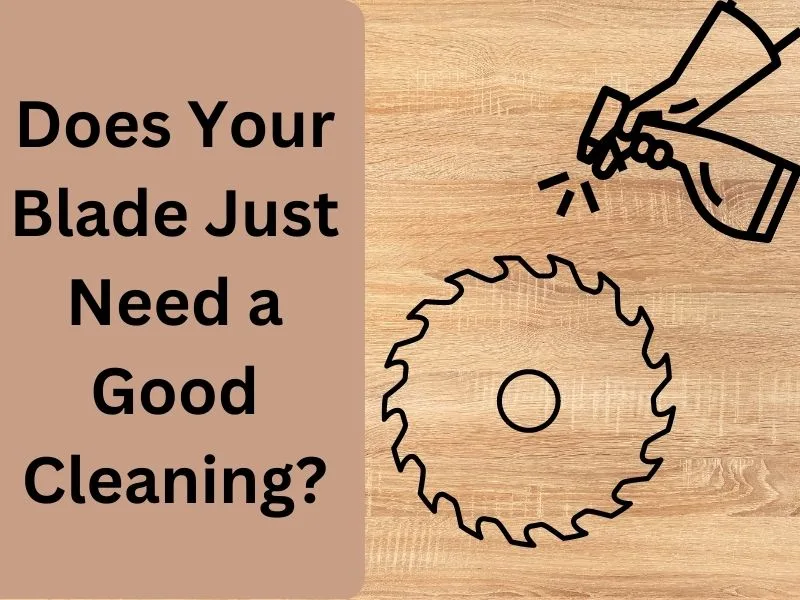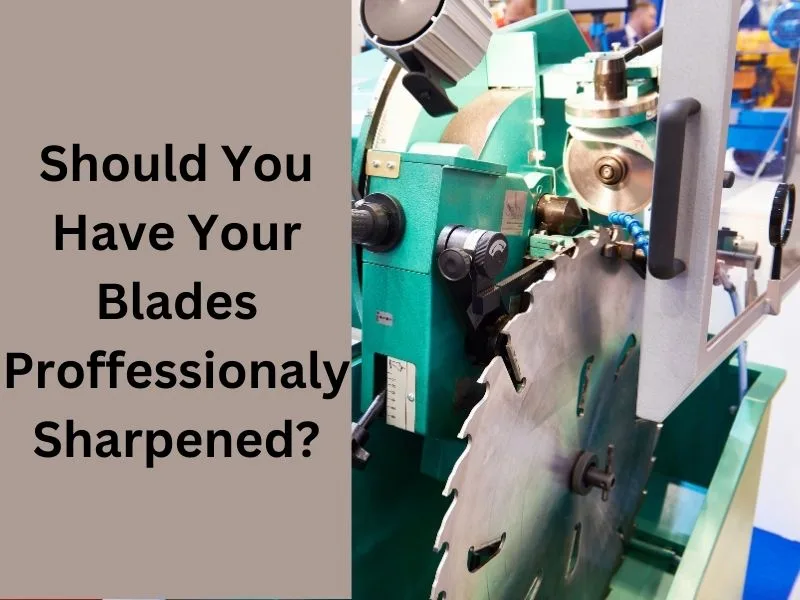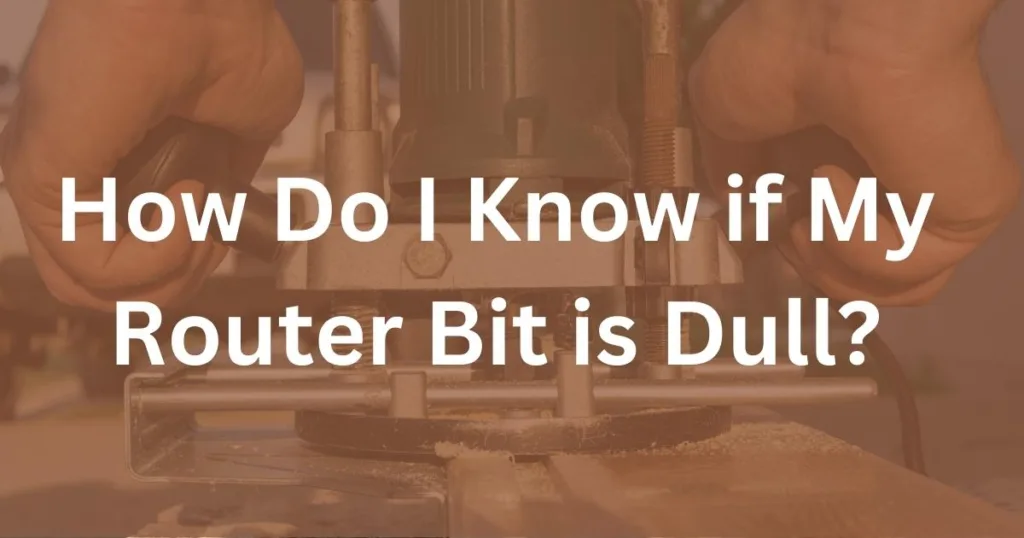
The blade on your table saw is your bread and butter when it comes to making rip cuts in your workshop. If you think you may have a dull blade on your hands, it is a good idea to check it out to see if it needs replacing. So, how do you know when you should change your table saw blade?
A table saw blade will begin to exhibit several symptoms as it nears the end of its useful life. Things you should watch out for are:
- Chipping or tear-out
- Burn marks
- Damaged Teeth
- Rounded Edges
- Resistance while cutting
Your table saw blade may only exhibit a few of the symptoms above or could be showing all the signs. Either way, you should look into getting it professionally sharpened or replaced.
What Causes Your Table Saw Blade to Wear?
When a table saws blade cuts through material, the sharp edge on the teeth will become a little more rounded with each pass. If you are just cutting wood, it will be much slower than if you were cutting a harder material such as metal.
A general rule of thumb to keep in mind is the harder the material, the faster the blade will wear down. This is also true for say, softwood versus hardwood. Hardwood will cause your table saw blade to wear faster than softwood.

Does Your Table Saw Blade Just Need to be Cleaned?
If you are experiencing any of the symptoms of a dull saw blade, it is wise to first perform a visual inspection. The case could be that your blade has built up residue and just needs to be thoughourly cleaned.

As you cut through wood, the resin from the wood itself will start binding to your cutting teeth. The same is true of glue if you are cutting through pieces of wood that have been glued. This buildup is minor in the beginning stages, but over time, it can become an issue.
The buildup of the gunk on your saw blade’s teeth can cause your saw blade to start exhibiting all of the same symptoms as if the teeth were just dull. If this is the case, grab some cleaner (everyone has their own opinion on the best, but a popular choice seems to be simple green), a brass brush, and get to work. The saw blade should be removed for this step and depending on the cleaner, may need to be in a well-ventilated area.
While cleaning your blade, use this time to keep an eye out for any other issues such as broken or chipped teeth. If you see some of these issues as you are working, it might be a good idea to go ahead and look at having it sharpened or replaced.
I have seen many people recommending replacing or sharpening your saw blade after 2-3 cleanings. In my opinion, this may be a good rule of thumb, but I will just let the performance of the saw blade let me know when it is time to be replaced. If I have thoughourly cleaned my saw blade, and it still lacks the performance I expect, I will either have it sharpened or replace it altogether.
How Long Will a Table Saw Blade Last?
“How long will a table saw blade last?”. When searching this question, you will get wildly different results. This is because there is not a good definitive answer.
I have seen an answer of 10 to 120 hours of continuous use, which are two very different numbers. I have also seen 2-4 years, which is also not helpful because that depends on how often you use the blade.
I think the real answer is not the one that people want to hear, but it depends on so many variables that you can’t just define one number that encompasses all table saw blades. It will depend on blade quality, blade type, number of teeth, the material you are cutting, blade speed, how often it is cleaned, etc.
The list of things that would need to be considered is very long and will be different for every person, because of all the variables. I believe it is better to understand the signs of a wearing table saw blade. Once you can identify when your table saw blade has worn down, you can begin to gain some experience on how long that particular blade will last with your setup.
It is not a popular answer, but one that you will begin to understand as you gain experience and time with using your table saw setup.
Should You Replace or Sharpen Your Dull Table Saw Blade?
Quite often, you will see the recommendation to either sharpen or replace your table saw blade, but if you don’t have a ton of experience with table saw blades, it can be difficult to determine which route you need to take.

This is the exact problem I have had to deal with, so I decided to do some research to help with this decision. I figured that the decision would best be made on a cost basis, so I researched some options for sharpening versus a new blade. You can view the data I found in the table below.
Since most companies charge on a per-tooth basis, I assumed a blade with 80 teeth. Your exact blade may be less or more than this, but this should give you a good feel for what to expect.
Note: You can view the company’s pricing page by clicking their name in the table.
Cost to Sharpen Table Saw Blade vs. New Blade
| Company | Carbide | Steel |
|---|---|---|
| Bob's Sharp All | $28.00 | $7.00 |
| Rosemount Saw & Tool | $19.75 | $7.50 |
| Dynamic Saw Inc. | $17.00 | $17.00 |
| New Table Saw Blade | ||
| DeWALT, 10" Carbide, 80 Teeth | $52.68 | |
| Craftsman, 2 Pack, 10" High Speed Steel, Carbide Tipped | $19.98 |
If you have a carbide blade of decent quality it can tend to be quite expensive to replace, and this is where having a blade sharpened can save you some money. If you look at the DeWalt blade, it is over $50 new. If you were to have this blade sharpened, it could cost less than half of a new blade. However, if you purchase a cheaper blade, such as the craftsman 2-pack, it is much cheaper to replace the blade altogether.
Keep in mind, that some of these blade sharpening companies can charge pretty hefty shipping fees and that will also need to be taken into consideration. Also, if your blade has significant damage, such as broken teeth, it may be better to go ahead and replace the blade. If it can be repaired, it can get quite expensive.
Conclusion
A dull table saw blade will exhibit cutting symptoms such as binding, hard to feed, burning, and tear out. If you suspect a dull table saw blade, it should first be cleaned as this can cause similar symptoms to a dull blade. It should also be inspected for damaged or broken teeth, which may warrant replacing your blade.
If you have cleaned your blade and didn’t find any damaged teeth, but it still doesn’t perform well, it is time to either have your blade sharpened or replaced.


